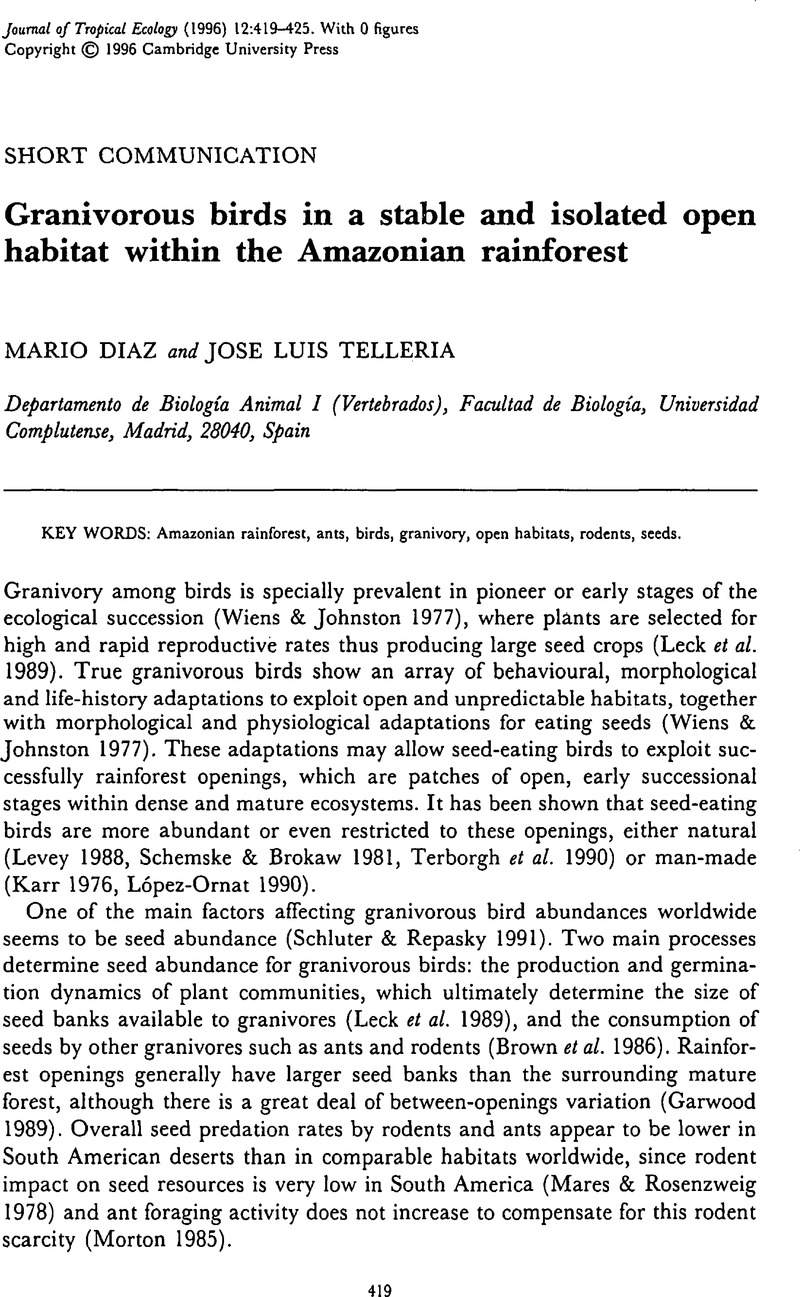Crossref Citations
This article has been cited by the following publications. This list is generated based on data provided by Crossref.
Chettri, Nakul
Deb, Debes Chandra
Sharma, Eklabya
and
Jackson, Rodney
2005.
The Relationship Between Bird Communities and Habitat.
Mountain Research and Development,
Vol. 25,
Issue. 3,
p.
235.
Chettri, Nakul
2010.
Cross-taxon congruence in a trekking corridor of Sikkim Himalayas: Surrogate analysis for conservation planning.
Journal for Nature Conservation,
Vol. 18,
Issue. 2,
p.
75.
Ko, Chia‐Ying
Schmitz, Oswald J.
Barbet‐Massin, Morgane
and
Jetz, Walter
2014.
Dietary guild composition and disaggregation of avian assemblages under climate change.
Global Change Biology,
Vol. 20,
Issue. 3,
p.
790.
Ding, Zhifeng
Liang, Jianchao
Hu, Yiming
Zhou, Zhixin
Sun, Hongbin
Liu, Lina
Liu, Haijun
Hu, Huijian
and
Si, Xingfeng
2019.
Different responses of avian feeding guilds to spatial and environmental factors across an elevation gradient in the central Himalaya.
Ecology and Evolution,
Vol. 9,
Issue. 7,
p.
4116.
Sohil, Asha
and
Sharma, Neeraj
2020.
Assessing the bird guild patterns in heterogeneous land use types around Jammu, Jammu and Kashmir, India.
Ecological Processes,
Vol. 9,
Issue. 1,
Sementili-Cardoso, Guilherme
Vianna, Renata Marques
Ottonicar, Rafael Gustavo Capinzaiki
and
Donatelli, Reginaldo José
2020.
Differences in the bird community between a regenerating area and a native forest in Southeastern Brazil.
Journal of Natural History,
Vol. 54,
Issue. 45-46,
p.
2937.
Nasruddin-Roshidi, Affan
Mansor, Mohammad Saiful
Ismail, Nor Adibah
Ngadi, Ehwan
Izzat-Husna, Mohd
Husin, Shahril Mod
Mohd-Taib, Farah Shafawati
Illias, Rahmah
and
Nor, Shukor Md
2021.
Recovery of bird communities following the construction of a large-scale hydroelectric dam.
Ecological Processes,
Vol. 10,
Issue. 1,
Ahmed, Tanveer
and
Khan, Afifullah
2022.
Avifaunal feeding guilds’ response to landscape compositional heterogeneity and their drivers in forest mosaic, Uttarakhand, India.
Journal of Tropical Ecology,
Vol. 38,
Issue. 4,
p.
183.
Otieno, Nickson Erick
and
Pryke, James Stephen
2022.
Tree and hedgerow configurations on maize farms are key drivers of granivorous passerine bird assemblage patterns.
Agriculture, Ecosystems & Environment,
Vol. 338,
Issue. ,
p.
108104.
Karjee, Ratnesh
Palei, Himanshu Shekhar
Konwar, Abhijit
Gogoi, Anshuman
and
Mishra, Rabindra Kumar
2022.
Bird Assemblages in a Peri-Urban Landscape in Eastern India.
Birds,
Vol. 3,
Issue. 4,
p.
383.
Otieno, Nickson E.
and
Pryke, James Stephen
2022.
Tree and Live Hedgerow Configurations on Maize Farms are Key Drivers of Granivorous Passerine Bird Assemblage Patterns.
SSRN Electronic Journal ,
Sedláček, Ondřej
Pernice, Riccardo
Ferenc, Michal
Mudrová, Karolína
Motombi, Francis Njie
Albrecht, Tomáš
and
Hořák, David
2023.
Abundance variations within feeding guilds reveal ecological mechanisms behind avian species richness pattern along the elevational gradient of Mount Cameroon.
Biotropica,
Vol. 55,
Issue. 3,
p.
706.



